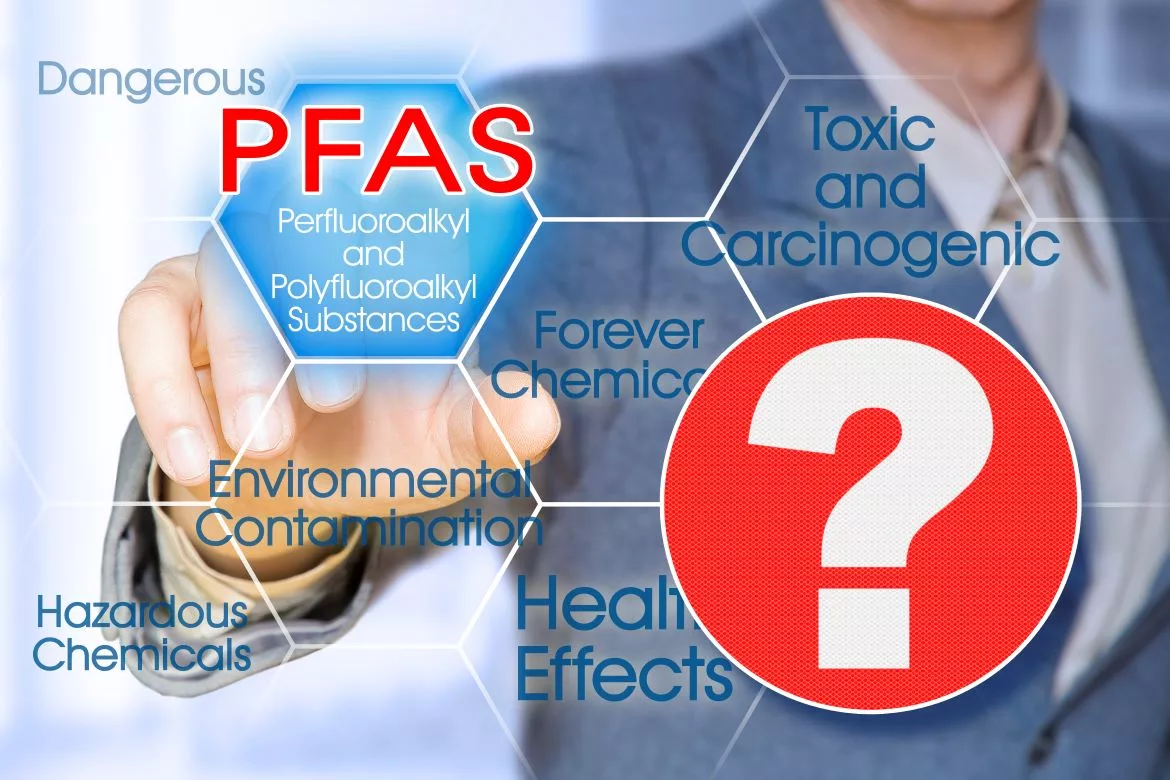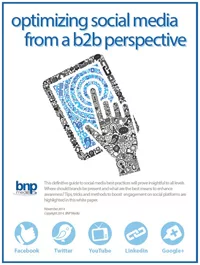Preparing for a PFAS-Restricted Future

Credit: Francesco Scatena / iStock via Getty Images Plus
Since their introduction in the 1940s, the use of per- and polyfluoroalkyl substances (PFAS), often referred to as “forever chemicals,” has increased dramatically in both consumer and industrial goods, due to their unique properties, such as the capability to repel water and oil.
PFAS can now be found in everything from cosmetics and clothing to sealants, adhesives and semiconductors. However, these synthetic chemicals persist indefinitely in the environment, triggering serious concerns about their ecological and health impact and leading to legislation, such as a proposed European Union (EU) ban on their nonessential use. As regulatory scrutiny grows, understanding PFAS dependency and how to optimally respond to possible issues in the supply chain is vital for manufacturers and investors alike.
Understanding PFAS and Their Uses
PFAS are known for their resistance to breaking down, meaning they persist and accumulate in the environment indefinitely. Of the thousands of PFAS types in existence, approximately 250 have commercial significance. They are valued for their unique properties, such as the ability to repel water, oil and dirt, as well as their resistance to extreme temperatures, pressures and pH levels. As a result, PFAS are found in a wide range of everyday products — they are not just forever, but are, in fact, everywhere.
Health concerns about PFAS began to rise globally in the early 2000s due to growing evidence linking them to serious health issues, such as various types of cancer, high cholesterol, obesity, thyroid disease, liver damage and pregnancy-induced hypertension. Studies have shown that most people have some amount of PFAS in their blood. The early warning signs were present decades ago, as documented by a lawsuit against U.S. multinational chemical company DuPont, which involved water contamination from PFOA, a type of PFAS, at a West Virginia farm in the 1990s. While this case highlighted the dangers of these chemicals, the absence of regulation at the time meant it did not trigger widespread efforts to find alternatives.
The Tightening Regulatory Landscape
Over the past five years, countries across the world have begun to take action on “forever chemicals.” For example, between 2019 and 2023, the EU added three groups of PFAS to its list of Substances of Very High Concern (SVHC). The EU’s Chemicals Strategy strongly prioritizes phasing out PFAS, with a proposal to regulate them as a group submitted to the European Chemicals Agency (ECHA) in January 2023. A consultation is now open for gathering and reviewing evidence, and regulations may eventually lead to tighter restrictions on industrial use and a total ban by the ECHA on PFAS within consumer goods in Europe.
Significant legal challenges to the use of PFAS can also be observed at a national level. Chemours, a U.S. chemical company, was prosecuted in the Netherlands and found liable for environmental damage caused by PFAS over several decades. Another notable example comes from Sweden, where the Supreme Court ruled in favor of the residents of the municipality of Kallinge, who were affected by PFAS after fire-protection foam from an F17 jet contaminated local groundwater. These court victories potentially create a domino effect, as other local authorities may feel encouraged to file lawsuits over PFAS contamination, thereby dramatically increasing litigation risks for producers and downstream companies that use PFAS-containing materials.
These challenges aren’t limited to Europe. In 2006, the 2010/2015 PFOA Stewardship Program was launched in the United States. This voluntary initiative included eight prominent chemical producers — including DuPont, BASF and 3M — committed to reducing emissions and the use of PFOA and related chemicals. In 2023, the U.S. Geological Survey (USGS), which studies the nation’s natural resources, detected at least one type of PFAS in 45% of collected drinking water samples, which might be a conservative estimate. In the same year, PFAS producer 3M agreed to a settlement of $10.3 billion with a group of U.S. public water suppliers after the company recognized changing sentiments around regulation and public awareness.
At a national level in the United States, the Biden-Harris administration finalized the National Primary Drinking Water Regulations (NPDWR) in February 2024. These are the first-ever national, legally enforceable drinking water standards intended to combat PFAS pollution. However, the Trump presidency is now withdrawing some of the proposed PFAS limitations, stalling change in this area.
Additionally, multiple U.S. states, including California, New York and Washington, are taking significant steps to address the PFAS problem. In Maine, for instance, a new law requires manufacturers to disclose the presence of PFAS in their products. By 2030, the state plans to enforce a complete ban on products containing PFAS unless the chemicals are deemed essential by the U.S. Environmental Protection Agency (EPA) or equivalent state agencies.
Shifting Strategies and Priorities
Growing regulatory pressure, though not yet affecting all regions, is already shaping corporate strategies, particularly among major PFAS producers. One notable example is 3M, historically one of the world’s largest manufacturers of the chemicals, which in 2022 announced plans to phase out all PFAS production by the end of 2025. Demonstrating the size of its impact, this decision will affect more than $1 billion of the company’s annual revenue.
Another example of shifting priorities is the Investor Initiative on Hazardous Chemicals (IIHC), an organization consisting of more than 60 global asset managers, such as Credit Suisse, BNP Paribas and PGGM. Members actively influence company portfolios, urging firms to develop actionable plans for phasing out hazardous chemicals, including fluorinated substances such as PFAS.
Looking forward, the growing drive to regulate PFAS also opens significant opportunities for innovation. PFAS-free alternatives are being developed by both established companies and new entrants, with organizations pioneering cleaner business models and creating take-back schemes and end-of-life treatment solutions for existing PFAS products. Companies such as Norrøna and Patagonia have adopted PFAS-free water-repellent technologies for their clothing, showing that change is not just possible but can be part of — and enhance — overall sustainability strategies. These examples demonstrate that proactive change is both possible and profitable.
Are PFAS Essential to Your Strategy?
For companies that rely on PFAS, a crucial factor driving urgency around planning is whether these chemicals are essential to their operations. Essential use cases — such as within medical devices, aerospace, aviation, defense and semiconductors — where viable substitutes are harder to find, are likely to be given longer timelines to transition and find new equivalent alternatives, compared to applications such as water-resistant clothing, nonstick cookware, fast-food wrappers and cosmetics. For example, medical applications are more likely to receive derogation for several years, if not longer. In contrast, a company using PFAS to produce nonstick cooking pans may only get 12 months to change once regulations are enacted.
Understanding whether or not a specific application of PFAS is essential is a hot topic of debate. Yet, relying on this status is a risky strategy for two key reasons:
- A Changing Environment — Today’s essential use cases may not retain that status in the future, as alternatives emerge and become increasingly more economically viable. For example, specialized foam is a highly effective tool for fighting flammable gas fires, but most contain PFAS. The Dutch Organisation for Applied Scientific Research (TNO) is collaborating with the U.S. Strategic Environmental Research and Development Program (SERDP) to work on a PFAS-free firefighting foam that uses clay nanoparticles, water-soluble polymers, surfactants and extinguishing agents. In addition to firefighting foams, TNO actively develops alternatives to PFAS chemicals for electronics and semiconductor applications.
- Risk of Reputational Damage — Given the increasing visibility of PFAS and its environmental impact, consumers are much more aware of “forever chemicals.” That means even companies whose application of PFAS is deemed essential still face a significant risk of reputational damage by association. Many companies involved in nonessential PFAS applications are already shifting toward alternatives. Multiple global brands have either announced bans on PFAS or declared that their products are PFAS-free. The Environmental Working Group (EWG), an American nonprofit, has compiled a comprehensive list of these companies and the parameters of their commitments. For example, IKEA currently bans PFAS in its textiles and paper and chemical products (e.g., paints, oils, cleaning agents). However, PFAS remains present in its electrical products, where replacement is more challenging, as well as in a variety of nonstick pans.
Moving Forward — Turning PFAS Risk Into Opportunity
The sheer range of uses for PFAS and tightening regulations mean that many chemical companies and brands, whether directly or indirectly through their suppliers, face significant risks related to their usage of “forever chemicals.” This is further complicated by the fact that for many, PFAS exposure is an invisible threat. Often, they may not be fully aware of their own PFAS risks — the chemicals can be embedded in components sourced from the wider supply chain, while disclosure requirements are far from universal.
Companies that are aware of the presence of PFAS in their products must decide how to react in a timely manner and determine an adequate response. Product recall? Information sharing? To whom and by when? Worryingly, a 2023 Sustainalytics survey showed that globally, only 10% of chemical companies had a strong hazardous substance management program, and more than 40% had none.
Once their essential and nonessential use of PFAS has been identified, companies can begin their transition away from them. However, challenges remain. Uncertainty around regulatory timelines complicates effective planning, while it can be technically challenging to find functional PFAS alternatives that match performance, are cost-effective and meet regulatory deadlines and market demands.
Phasing out PFAS brings more than just health and environmental benefits. More than 50% of annual EU PFAS production is tied to consumer goods, such as apparel and food packaging. In these cases, alternatives are already available, providing potential solutions for companies. Replacing PFAS could also lead to a significant reduction in emissions, enabling companies to both adopt safer materials and support their decarbonization strategies at the same time.
The message is clear: early action on PFAS can transform a threat into a business opportunity. As awareness grows and regulations tighten, the question for businesses is no longer whether they should act, but how quickly they can adapt before being disrupted by PFAS-free alternative solutions. Five critical questions can help organizations navigate this issue:
- Do I have a PFAS problem in my (investment) portfolio? How big is the problem now? How big will it be tomorrow?
- What do I do with existing products and solutions? Can I continue selling current products without incurring risks? How do I deal with the installed assets? Can I replace them profitably by offering enhancements and an improved customer experience?
- Are there suitable and well-performing alternatives or solutions available, such as new safe molecules with similar properties? Is there a risk of disruption by PFAS-free solutions for certain applications? Can I outsource a breakthrough development, for example, to a consortium?
- What does PFAS exposure mean for my competitive position? Are there opportunities to improve it?
- What targets and timelines should I establish? Should I be proactive or reactive? How should the transition be organized?
Getting Ready for a PFAS-Restricted Future
The global direction of travel for PFAS regulation is clear, meaning it is only a matter of time before more stringent restrictions are enacted across the world. At the same time, consumers, public authorities and environmental activists are increasingly concerned about “forever chemicals,” dramatically increasing the risk of legal challenges and reputational damage. All of this means that manufacturers and brands need to prepare for change, even as uncertainties around timing, cost and available alternatives complicate this transition.
To position companies for success in a PFAS-restricted world and mitigate risks, five proactive measures are essential. First, businesses should assess PFAS exposure across their product portfolios by thoroughly analyzing data from suppliers and value chain partners. It is also crucial to closely monitor evolving legislation in relevant markets to stay ahead of regulatory changes. Companies should actively seek out existing technologies, startup partners and research teams, as each may contribute part of the solution. Investing in new alternative materials or solutions is another key step to ensuring sustainability and compliance. Finally, developing a comprehensive PFAS strategy will help mitigate long-term risks while providing a competitive advantage, helping companies move away from “forever chemicals” and their wider impacts.
Looking for a reprint of this article?
From high-res PDFs to custom plaques, order your copy today!









